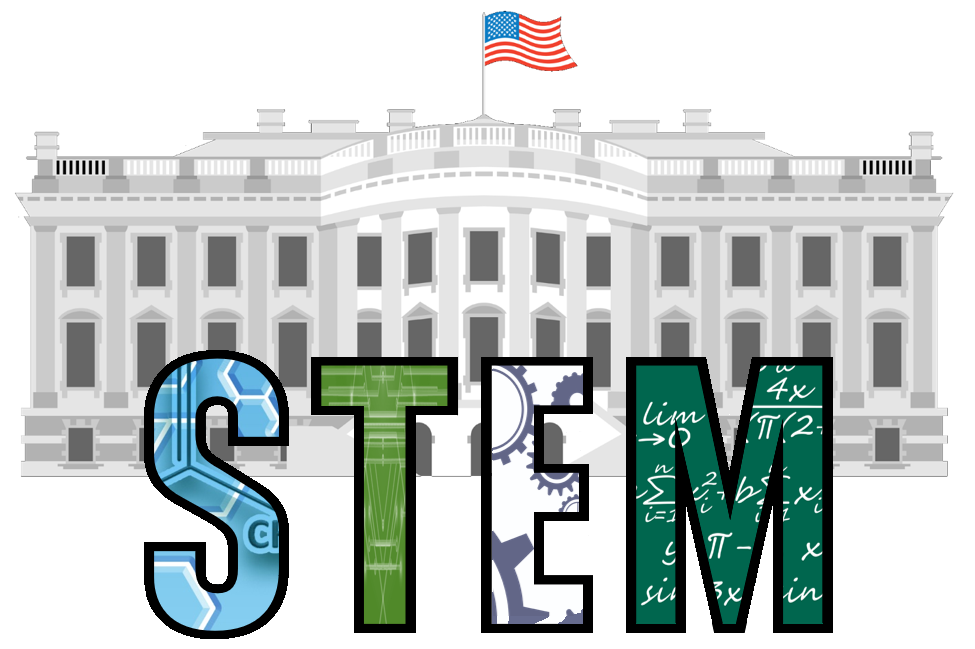The Trump administration has emphasized bringing manufacturing back to the United States. As a result of this push, the so-called skills gap has come into sharper focus. How large is the gap? Adrienne Selko (@ASelkoIW), Senior Editor of IndustryWeek, reports, “Deloitte and the Manufacturing Institute issued a report, 2018 Skills Gap Study, showing that 2.4 million jobs will likely go unfilled over the next decade.”[1] She adds, “To put that in terms of the monetary effect on the U.S. economy, the study showed that it could jeopardize $454 billion of economic output in 2028 or more than $2.5 trillion over the next decade.” To address this growing concern, the White House has released “a five-year strategic plan for science, technology, engineering and math education, setting forth what it calls a ‘North Star’ that ‘charts a course for the Nation’s success’.”[2] Lauren Camera (@laurenonthehill) reports, “The administration’s goal is threefold: for every American to master basic STEM concepts, like computational thinking, in order to respond to technological change; to increase access to STEM among historically underserved students; and to encourage students to pursue STEM careers.”[3]
Eliminating the skills gap begins in early education
The manufacturing sector has changed as much any economic sector. The future is one filled with 3-D printing, robotics, self-driving cars, artificial intelligence, quantum computing, and many other technological advances. To succeed in the future workplace, today’s students need to develop skills that can adapt with the times. Roland Rodriguez (@RolandReportsCC) observes, “Technology is quickly shaping every part of our lives. From the grocery store to the manufacturing floor, computers and high-tech systems have made our society more efficient and effective than ever before. The only downside to this upside is the number of STEM jobs in our nation is far surpassing the number of STEM graduates. To keep up with this pace, the [country] needs to foster interest in STEM for all ages.”[4] He adds, “The demand for skilled workers in the areas of science, technology, engineering and mathematics is becoming increasingly important because in our 21st century global economy, most jobs will require a basic understanding of math and science.” For a number of years, several colleagues and I have asserted the U.S., in order to remain competitive in the world economy, needs to place more emphasis on STEM education. As a result, we founded The Project for STEM Competitiveness — a project-based, problem-solving approach to STEM Education that helps schools near where we live demonstrate to students that STEM subjects can be fun and applicable in their lives. We believe learning how to solve everyday problems will help students in every aspect of their lives.
Not all STEM areas are equal. Mathematics is absolutely essential along with basic computer skills. Instruction in these subjects needs to begin in the home and then be emphasized in school beginning in kindergarten. Betsy Foresman (@all_bets_areoff) reports, “The number of open computer science jobs is continuing to grow and drawing the attention of educators and industry to the urgent need for comprehensive K-12 computer science education. … In the survey of 500 K-12 teachers across the country, Microsoft found that 88 percent of teachers believe computer science is critical to the future workplace success of students.”[5] The Trump administration agrees with that assessment. Randy Showstack (@RandyShowstack) reports the Trump administration’s STEM strategy “calls for building a strong foundation for all Americans to gain STEM literacy, so that they can be better able to handle the rapid pace of technological change and be ‘better prepared to participate in civil society.’ The strategy also calls for equal access to STEM education opportunities across the country for a more diverse and inclusive STEM ‘ecosystem’ and for preparing the ‘STEM workforce of the future’.”[6]
White House STEM strategy
Showstack notes, “The 36-page strategy is laid out in Charting a Course for Success: America’s Strategy for STEM Education, which was prepared by the Committee on STEM Education of the White House’s National Science and Technology Council. It follows and covers much of the same ground as a 143-page STEM education strategic plan issued in 2013 by the Obama administration, and it was issued in response to requirements of the America COMPETES Reauthorization Act of 2010.” According to the strategy’s Executive Summary:
It represents an urgent call to action for a nationwide collaboration with learners, families, educators, communities, and employers — a ‘North Star’ for the STEM community as it collectively charts a course for the Nation’s success. This vision will be achieved by pursuing three aspirational goals:
- Build Strong Foundations for STEM Literacy by ensuring that every American has the opportunity to master basic STEM concepts, including computational thinking, and to become digitally literate. A STEM-literate public will be better equipped to handle rapid technological change and will be better prepared to participate in civil society.
- Increase Diversity, Equity, and Inclusion in STEM and provide all Americans with lifelong access to high-quality STEM education, especially those historically underserved and underrepresented in STEM fields and employment. The full benefits of the Nation’s STEM enterprise will not be realized until this goal is achieved.
- Prepare the STEM Workforce for the Future — both college-educated STEM practitioners and those working in skilled trades that do not require a four-year degree — by creating authentic learning experiences that encourage and prepare learners to pursue STEM careers. A diverse talent pool of STEM-literate Americans prepared for the jobs of the future will be essential for maintaining the national innovation base that supports key sectors of the economy and for making the scientific discoveries and creating the technologies of the future.
The Executive Summary indicates four, cross-cutting pathways will be used to achieve those goals. Those pathways are:
- 1. Develop and Enrich Strategic Partnerships. “This pathway focuses on strengthening existing relationships and developing new connections between educational institutions, employers, and their communities.”
- 2. Engage Students where Disciplines Converge. “This pathway seeks to make STEM learning more meaningful and inspiring to students by focusing on complex real-world problems and challenges that require initiative and creativity.”
- 3. Build Computational Literacy. “This pathway recognizes how thoroughly digital devices and the internet have transformed society and adopts strategies that empower learners to take maximum advantage of this change.”
- 4. Operate with Transparency and Accountability. “This pathway commits the Federal Government to open, evidence-based practices and decision-making in STEM programs, investments, and activities.”
Concluding thoughts
The skills gap in America is real and needs to be addressed. The new White House strategy is a good start. Some pundits believe too much emphasis is being placed on STEM education. Their concerns can’t be ignored; but, neither can the reality that we live in a technologically-oriented world. Jessie Campisi (@jessiecampisi) observes, “As debate continues over the proper balance between STEM, the humanities and other curriculum areas, the Trump White House initiative is in line with many STEM supporters’ hopes for future educational opportunities. The Trump administration hasn’t always had a consistent approach toward STEM and career and technical education (CTE) — one of the president’s proposed budgets, for instance, aimed to cut more than $1 billion in CTE funding. STEM educators and industry leaders will be watching to see whether this initiative takes a notable step in the opposite direction.”[7] To keep America competitive with the rest of the world, we need to build a solid base of STEM-educated workers.
Footnotes
[1] Adrienne Selko, “Skills Gap Could Cost US Economy $2.5 Trillion Over Next Decade,” IndustryWeek, 20 November 2018.
[2] Lauren Camera, “White House Outlines Five-Year STEM Push,” U.S. News & World Report, 3 December 2018.
[3] Ibid.
[4] Roland Rodriguez, “More STEM education needed for growing jobs demands,” KRISTV, 15 November 2018.
[5] Betsy Foresman, “There’s a shortage of K-12 computer science education in the U.S., Microsoft survey finds,” Edscoop, 4 December 2018.
[6] Randy Showstack, “White House Releases STEM Education Strategy,” EOS.org, 5 December 2018.
[7] Jessie Campisi, “White House releases five-year STEM education strategy,” Education Dive, 5 December 2018.





